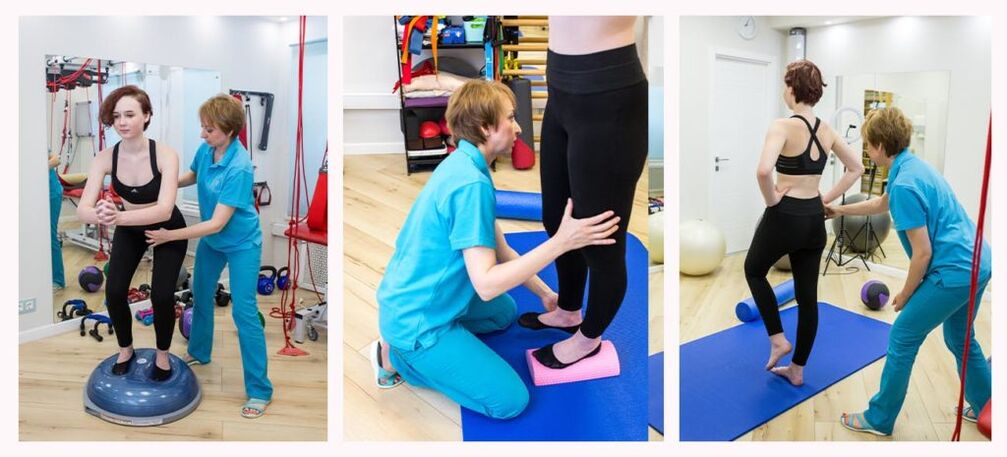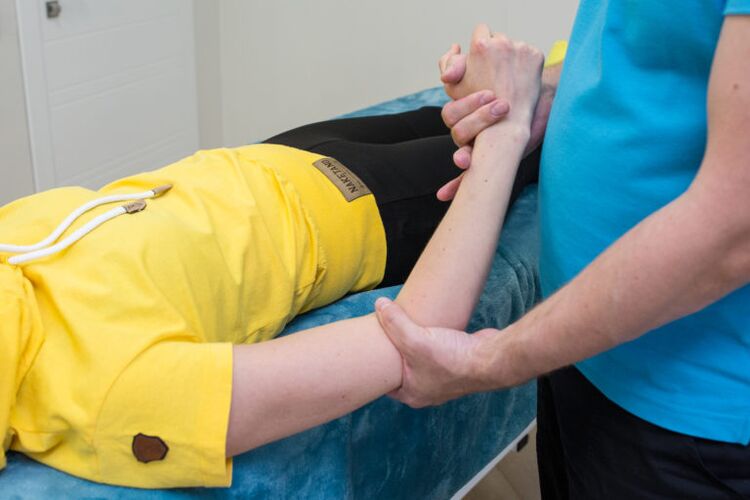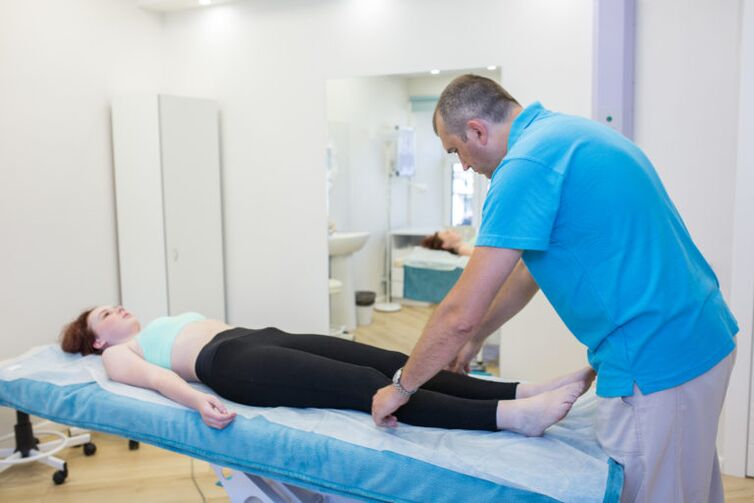Osteoarthritis is one of the most common manifestations of musculoskeletal disorders. They develop in the presence of inflammatory, degenerative-dystrophic, infectious processes in the body, as well as as a result of trauma and birth defects.
Doctors distinguish dozens of different joint diseases that have quite similar symptoms (pain, crunches, limited range of motion). This complicates diagnosis and impedes prompt treatment. Therefore, in this article, experts will tell you the manifestations and development characteristics of the most common joint pathologies.
Features of joints and the causes of their diseases
A joint is any connection of two or more bones. There are 38 pairs of joints in the human body (total 76 joints). They provide mobility and flexibility to our body. Mobility is an important function, and if disease limits it, quality and survival are reduced.
Every joint has articular surfaces - these are the surfaces of the bone that enters it, covered with a special, alkaline cartilage. It is dense, elastic, and necessary to protect bones from wear and tear during movement. It also ensures their perfect union with each other. It is the wear and tear of cartilage that becomes a common cause of pain, crunching, stiffness, and other signs of disease in the joints.

The joints are characterized by a complex structure. Joint surfaces, caps, fissures, synovial fluid, periarticular muscles and ligaments - all of these structures provide the joint's movement and support functions. Their damage can stimulate the development of diseases.
Cause of disease
Many people mistakenly believe that only the elderly suffer from joint diseases, due to the change of age and the weakening of the body. But this is not the case!
Diseases of the joints can develop due to:
- hurt;
- excess weight;
- physical activity;
- incorrect posture;
- flat feet;
- genetic predisposition;
- food with insufficient micronutrient content;
- diseases of internal organs;
- metabolic disorder;
- activities are transferred;
- infection.
People of all ages and even those in relatively good health (for example, men and women of working age, adolescents, children, athletes, etc. ) can face it. with the influence of these factors.
As a result, this group of diseases is getting younger and younger - in terms of incidence and disability, second only to cardiovascular and endocrine diseases, their treatment comes with high financial costs.
Mechanism of development and types of diseases
In the pathogenesis of joint damage, doctors distinguish four possible pathways:
First: the presence of inflammation in the body
This type of lesion is characterized by sudden onset, rapidly increasing inflammatory symptoms: swelling, pain, redness, fever. Occurs in infectious, allergic, autoimmune processes in children and adults.
Juvenile arthritis
It is characterized by an autoimmune (ie, self-destructive) process, the etiology of which is unknown. Transmitted infections, even in mild forms (eg, vaccinations), are often provocateurs.
The disease affects large joints (knees, elbows) in children and adolescents, negatively affecting a child's growth and development. Arthralgias accompanied by severe swelling, red skin, and fever.
Rheumatoid arthritis
There is also an autoimmune process of unknown etiology. Women are sick more often, the average age is 45-50 years. Up to 70% of patients become disabled.
Affects one (or several) small joints, such as wrists or fingers. This affects the patient's ability to work and even take care of themselves. They complain of severe pain, swelling, changes in the shape of their joints, and morning stiffness.
Psoriatic arthritis
In almost half of patients diagnosed with psoriasis, inflammatory processes develop in the small joints of the hands, feet and spine. The cause of arthritis, like the cause of the underlying disease, is still unknown.
Psoriatic arthritis can affect large joints and joints (elbows, knees), one or more joints, symmetrical or non-symmetrical.
The main manifestation is pain extending to the ligaments and tendons, swelling and blue skin of the fingers, limiting mobility.
Gout arthritis
It develops against the background of gout, due to the deposition of uric acid salts in the joints. Men get the disease more often than women, in the age group - 40-50 years old and over 60 years old, respectively.

A characteristic feature is the loss of a joint, which begins suddenly, lasts several weeks, is accompanied by severe pain and swelling, with the formation of uric acid nodules (moles).
Ankylosing spondylitis with ankylosing spondylitis
A chronic injury in which the spine, vertebral muscles, and sacral joints of the pelvis are affected.
Men are more often affected by the disease than women, the disease begins to appear in the 20s and 30s. Their main complaint is pain in the lower back, in the sacrum, in the hip joints; stiffness after a period of rest (especially in the morning, after sleeping).
Even with the relief of symptoms and relative good health, without eliminating the root cause, the inflammation continues to develop and, over time, causes a new flare-up. As a result, joint disease often becomes chronic and leads to disability.
Second: the presence of degenerative-dystrophic processes
With this type of injury, the joint is destroyed by physical factors. Trauma and minor traumas, constant exertion beyond what is normal, environmental influences (hypothermia, vibration) - all these pathological factors cause cartilage destruction and narrowing of the airways. joint space.
Bone and joint deformity
It develops due to damage and destruction of joint cartilage. Its joint surfaces become rough and sensitive to friction. Over time, the destruction goes to the bones, cysts, synovial lining, ligaments, and muscles. There is chronic inflammation and changes in the shape of the joints.
Osteoarthritis is the most common joint disease. It reduces the patient's quality of life, is disabling and difficult to treat. In youth, men are more susceptible to the disease, in old age - women.
Clinically, osteoarthritis is characterized by severe pain and limited range of motion, which increases with exertion. In the later stages, even rest and calm will not bring relief.
Bone tumor
It affects the spine and is caused by degenerative disc disease. Under the influence of negative factors, the nutrition of the disc is disrupted, which leads to loss of shape (forming protrusions and herniations), aging and destruction.

As a result, the spine loses mobility, pain, numbness, stiffness when moving, muscle weakness, difficulty urinating and emptying the intestines, headaches, dizziness. Symptoms depend on the part of the spine where osteonecrosis has developed and can vary widely.
Deformity of spondylolisthesis
This condition is also known as "facet syndrome". In this case, the destructive process affects the structure of the disc joint (capsule, ligament, facet).
Most of it occurs in the most "overloaded" part of the spine - the lumbar. It manifests as pain that radiates down the leg and is more intense when walking or standing in one place for long periods of time.
Bone disease
Caused by sterile (non-infectious) bone necrosis, for example, by impaired blood supply. As a result, the bones that enter the joint are prone to frequent fractures. In severe cases, the patient can be seriously injured even while sleeping.
In the early stages, the disease does not manifest outwardly. Many of those who get sick are athletes and people with "healthy" lifestyles. The former suffers from excessive stress, the latter deliberately restricts the food intake and takes away the necessary substances for the body.
In order to destroy the dense and elastic cartilage layer, the causative factor must act on the joints for many years, so degenerative-dystrophic changes often occur in old age. Or he has to act with superpowers, like in sports.
Many professional athletes become disabled at a young age.
Third: congenital joint disease
This type of injury causes abnormalities in the structure and growth of the joint due to maternal infection and trauma, comorbidities, late toxicity, and genetic diseases.
The most common manifestation of congenital abnormalities is congenital trauma, for example, dislocation of the hip or fracture of the collarbone.
Congenital dysplasia of the hip joint
It develops due to a violation of the formation of all joint structures in the period before and after birth. The prerequisites are heredity and tight swaddling. Girls are more susceptible to this pathology than boys - the prevalence is 80% and 20%, respectively.
With dysplasia, the shape of the joint is changed and its ligaments are too elastic. This causes displacement of the femur and impedes hip mobility, which can lead to disability.
Congenital clubfoot
Deformity caused by dislocated ankle joint, foot deviated inward relative to the lower leg.
Clubfoot most commonly affects boys and in half of the cases it is bilateral. If the defect is not eliminated in time, the child will not be able to walk normally and will still be disabled.
Marfan's syndrome
Hereditary disease in which the patient has elongated bones in the arms and legs, as well as increased mobility (excessive movement) of the joints.
In the early stages, many congenital arthropathies can be completely eliminated or growth can be slowed down by conservative methods. Late diagnosis and treatment can lead to impairment of motor and support functions, possibly leading to disability.
Fourth: diseases of the muscles and ligaments of the joints
Pathologies of this group often develop due to increased exercise and hypothermia.
Tendonitis
Inflammation and destruction of tendons. It was accompanied by his feelings of stress and pain, especially in the weather.
Myositis
The development of inflammation in the peristaltic muscles. It is accompanied by soreness when the affected area is felt, which increases with movement.
Bursitis
The inflammatory process is localized in the joint capsule. It usually affects professional athletes (wrestlers, runners, weightlifters).
Bursitis
Damage to the synovial membrane with fluid accumulation in the joint cavity. It is accompanied by pain, swelling, and stiffness when moving.
The relationship between disease and joint type
There is a certain pattern in which the joint is affected by any pathology. Some of them even have their own specific names.
Eg,knee jointIt can occur at any age, regardless of the sex and occupation of the patient. But ruptures of the meniscus and anterior cruciate ligaments are more common in athletes. Gonarthrosis - in the elderly. Arthritis of infectious origin - in children.
Pain inshouldermay be caused by periarthritis-psoriatic shoulder, cervical spondylosis, osteoarthritis.
Because theelbowtypical damage to tissues around the joint - spondylitis or "tennis elbow", "golfer's elbow".
The hip joint is more commonly affected in older people. As a result of osteoporosis and fibula fibrosis, they are at increased risk of femoral neck fractures.
Pain insmall jointHands and feet are observed in rheumatoid arthritis, psoriasis, gout.
But despite the specific manifestations, the diagnosis of rheumatic disease is often difficult, due to the late initiation of treatment and the risk of complications.
Symptoms and Diagnosis
Among the complaints that bother patients with rheumatic diseases are:
- Hurt;
- Swelling and puffiness of the eyes;
- Change shape;
- Stiffness of motion;
- Inability to perform normal range of motion.
Doctors call them joint syndromes. Doctors call them joint syndromes. It can also appear red skin, a rash on it and dense nodules. Among the general symptoms, patients often complain of an increase in temperature in the area of the lesion or of the whole body, an increased feeling of fatigue.

Reading the previous section, you may have noticed that all of these symptoms are found in most rheumatic diseases. Therefore, it is not possible to make a definite diagnosis based on your complaints alone - you should consult a doctor.
During the examination of the patient, the doctor not only pays attention to his complaints. For an accurate diagnosis, it is important to know the time of their appearance, which joints are affected, one or more joints, whether the lesion is symmetric, and other factors.
Let's take a closer look at each symptom:
Pain:
It occurs in almost any disease. Doctors distinguish several of its types:
- Inflammation- increase in the morning, after a period of rest. Typical for rheumatism, juvenile, gouty arthritis, spondylosis.
- Mechanical- Appears on exertion or changes in body position, usually in the late afternoon, disappears after rest. Typical for osteoarthritis, osteochondrosis, osteonecrosis, pathology of peristaltic tissues.
- "Begin"- occurs during the first 15–20 minutes of physical activity after a period of rest. Typical for degenerative joint disease.
- "Lockdown"- caused by compression in the articular cavity of a piece of cartilage, the result of which is the "wedge" of the joint. May be accompanied by a crunching sound. Occurs in degenerative joint disease.
- Constant- Remains, regardless of load and time of day, may increase at night. Typical for osteopathy, osteomyelitis, tumor and bone tuberculosis.
Number of joints affected:
- One (monoarthritis): with juvenile, gout, psoriatic arthritis.
- Two four (oligoarthritis): with rheumatoid arthritis, spondylitis.
- Over four (polyarthritis): with rheumatism, gouty arthritis.
Symmetry of the lesion:
- Symmetrical: used for rheumatoid arthritis.
- Asymmetrical: used for spondylitis, gout, osteoarthritis.
- "Migration": with gout.
Morning stiffness:
It is felt by the patient as impossible and stressful to move. It occurs in the morning and is associated with an overnight accumulation of fluid in the joint cavity. Typical for rheumatoid arthritis, spondylitis.
In addition, the doctor also noted the general complaints:
- Increased body temperature;
- Redness of the skin, a rash on it;
- Failure of internal organs.

For an accurate diagnosis, laboratory studies (blood, joint fluid) and instrumental studies (X-ray, CT, MRI, ultrasound) are required.
Conclusion
Joint pain and dysfunction can have many causes. There are diseases that cannot be treated, but many of them, with adequate and timely treatment, will allow a person to live a full life. Therefore, if you have at least one of the symptoms listed, contact your doctor - do not self-diagnose, do not prescribe treatment, and much less endure the pain.
We take a holistic approach to joint pain, and many of our patients have regained the joy of movement.

























